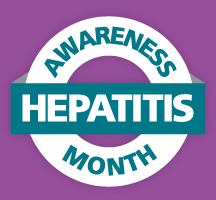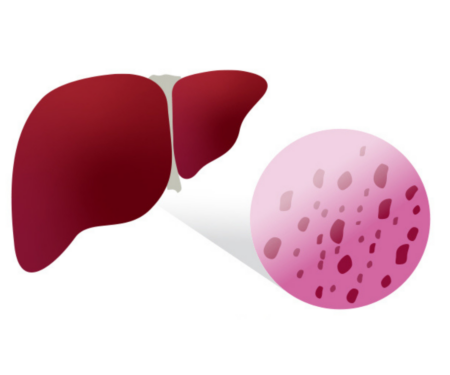Digestive Health Specialists, PA is here to help if you, or someone you know, would like more information, or if you are experiencing any digestive health symptoms and would like further evaluation. Feel free to give us a call at 336-768-6211 or fill out the form below.
What is Viral Hepatitis?
Hepatitis is an infection that causes inflammation of the liver. This inflammation can cause damage to the liver and disrupt the liver’s ability to function properly. Some types of hepatitis can cause chronic or long-term damage, to the liver. This is why it is important to determine the cause of the inflammation and treat it correctly. Below is a summary of the different types of viral hepatitis.
Hepatitis A
- Vaccine: YES
- Treatment: YES
- Cure: Most people make a full recovery
The virus is primarily spread when an uninfected (and unvaccinated) person ingests food or water that is contaminated with the feces of an infected person. The disease is closely associated with unsafe water or food, inadequate sanitation, poor personal hygiene, and oral-anal sex. It does not cause chronic liver disease but it can cause debilitating symptoms and rarely fulminant hepatitis (acute liver failure), which is often fatal.
Symptoms of hepatitis A range from mild to severe and can include fever, malaise, loss of appetite, diarrhea, nausea, abdominal discomfort, dark-colored urine, and jaundice (yellowing of the eyes and skin). Not everyone who is infected will have all the symptoms.
There is no specific treatment for hepatitis A. Recovery from symptoms following infection may be slow and can take several weeks or months.
Improved sanitation, food safety, and immunization are the most effective ways to combat hepatitis A.
The spread of hepatitis A can be reduced by:
- adequate supplies of safe drinking water;
- proper disposal of sewage within communities; and
- personal hygiene practices such as regular handwashing before meals and after going to the bathroom.
Hepatitis B
- Vaccine: YES
- Treatment: YES
- Cure: In development
Hepatitis B is potentially life-threatening and is a major global health problem. It can cause chronic infection and puts people at high risk of death from cirrhosis and liver cancer. A safe and effective vaccine that offers 98% to 100% protection against hepatitis B is available. Preventing hepatitis B infection averts the development of complications including chronic disease and liver cancer.
It is most commonly spread from mother to child at birth (perinatal transmission) or through horizontal transmission (exposure to infected blood). The development of chronic infection is common in infants infected by their mothers or before the age of 5 years. It is also spread by needlestick injury, tattooing, piercing, and exposure to infected blood and body fluids, such as saliva and menstrual, vaginal, and seminal fluids.
Transmission of the virus may also occur through the reuse of contaminated needles and syringes or sharp objects either in health care settings, in the community, or among persons who inject drugs. Sexual transmission is more prevalent in unvaccinated persons with multiple sexual partners.
Most people do not experience any symptoms when newly infected. However, some people have acute illness with symptoms that last several weeks, including yellowing of the skin and eyes (jaundice), dark urine, extreme fatigue, nausea, vomiting, and abdominal pain. People with acute hepatitis can develop acute liver failure, which can lead to death. Among the long-term complications of HBV infections, a subset of persons develops advanced liver diseases such as cirrhosis and hepatocellular carcinoma, which cause high morbidity and mortality.
Chronic hepatitis B infection can be treated with medicines, including oral antiviral agents. Treatment can slow the progression of cirrhosis, reduce the incidence of liver cancer and improve long-term survival.
Hepatitis C
- Vaccine: NO
- Treatment: YES
- Cure: YES
The hepatitis C virus is a bloodborne virus, which causes both acute and chronic infection. It is most commonly transmitted through:
- the reuse or inadequate sterilization of medical equipment, especially syringes and needles in healthcare settings;
- the transfusion of unscreened blood and blood products; and
- injecting drug use through the sharing of injection equipment.
HCV can be passed from an infected mother to her baby and via sexual practices that lead to exposure to blood (for example, people with multiple sexual partners and among men who have sex with men); however, these modes of transmission are less common.
It is not spread through breast milk, food, water, or casual contact such as hugging, kissing, and sharing food or drinks with an infected person.
Those who are acutely symptomatic may exhibit fever, fatigue, decreased appetite, nausea, vomiting, abdominal pain, dark urine, pale feces, joint pain, and jaundice (yellowing of the skin and the whites of the eyes). Because new HCV infections are usually asymptomatic, few people are diagnosed when the infection is recent.
There is no effective vaccine against hepatitis C so prevention depends on reducing the risk of exposure to the virus in health care settings and in higher-risk populations. This includes people who inject drugs and men who have sex with men, particularly those infected with HIV or those who are taking pre-exposure prophylaxis against HIV.
Primary prevention interventions recommended by WHO include:
- safe and appropriate use of health care injections;
- safe handling and disposal of sharps and waste;
- provision of comprehensive harm-reduction services to people who inject drugs;
- testing of donated blood for HBV and HCV (as well as HIV and syphilis);
- training of health personnel; and
- prevention of exposure to blood during sex.
Hepatitis D
- Vaccine: No (although hepatitis D only affects people living with hepatitis B for which there is a vaccine)
- Treatment: YES
- Cure: No
Hepatitis D is an inflammation of the liver caused by the hepatitis D virus (HDV), which requires HBV for its replication. This infection is unique because to be infected with hepatitis D the person also has to be infected with hepatitis B. HDV-HBV co-infection is considered the most severe form of chronic viral hepatitis due to more rapid progression towards hepatocellular carcinoma and liver-related death.
Vaccination against hepatitis B is the only method to prevent HDV infection.
The routes of HDV transmission, like HBV, occur through broken skin (via injection, tattooing, etc.) or through contact with infected blood or blood products. Transmission from mother to child is possible but rare. Vaccination against HBV prevents HDV coinfection and hence expansion of childhood HBV immunization programs has resulted in a decline in hepatitis D incidence worldwide.
Hepatitis E
- Vaccine: No
- Treatment: YES
- Cure: Most people make a full recovery
The virus is shed in the stools of infected persons and enters the human body through the intestine. It is transmitted mainly through contaminated drinking water. The infection is usually self-limiting and resolves within 2–6 weeks. Occasionally a serious disease is known as fulminant hepatitis (acute liver failure) develops, which can be fatal.
Typical signs and symptoms include:
- an initial phase of mild fever, reduced appetite (anorexia), nausea, and vomiting lasting for a few days;
- abdominal pain, itching, skin rash, or joint pain;
- jaundice (yellow color of the skin), dark urine, and pale stools; and
- a slightly enlarged, tender liver (hepatomegaly).
Prevention is the most effective approach against infection. At the population level, the transmission and infection can be reduced by:
- maintaining quality standards for public water supplies; and
- establishing proper disposal systems for human feces.
On an individual level, infection risk can be reduced by:
- maintaining hygienic practices; and
- avoiding consumption of water and ice of unknown purity.
We also want to encourage those in the priority populations to get tested. Who are these priority populations? The Department of Health and Human Services lists these as:
- Baby boomers
- People who inject drugs
- American Indians/Alaska Natives
- Asian Americans and Pacific Islanders
- African Americans
- People in correctional facilities
- Veterans
- Pregnant Women
- Homeless individuals
- Men who have sex with men
- Individuals living with HIV and viral hepatitis
The information contained in this article is from: https://www.worldhepatitisalliance.org/what-is-viral-hepatitis/
For more information on viral hepatitis, visit the following links from the World Health Organization: Hep A, Hep B, Hep C, Hep D, Hep E








